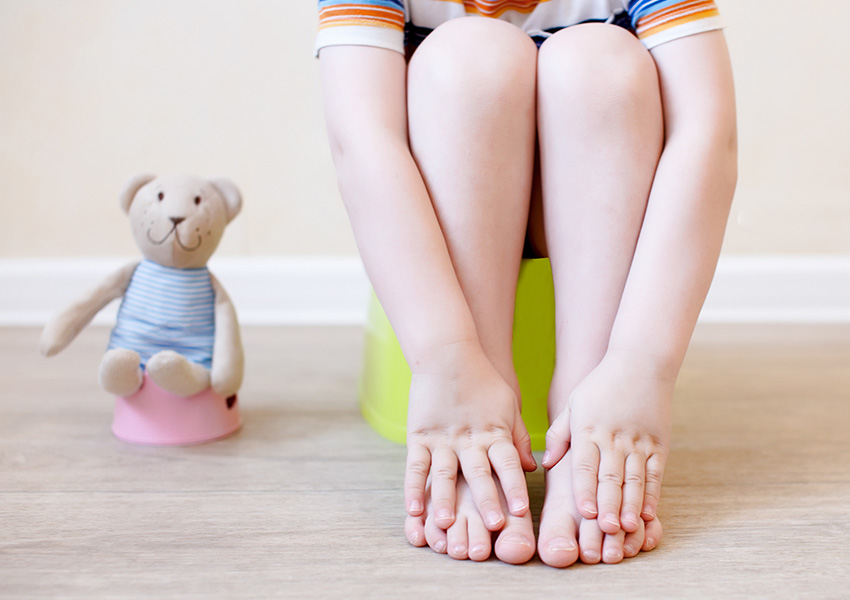How to keep things moving when your child is constipated.
A 5-year-old boy’s mother called me in distress. “What can I do to help my son poop? It’s been more than a week since he last went. He complains that his belly hurts, and it’s bulging like Winnie the Pooh’s (no pun intended!).”
Constipation is one of the most common reasons for a visit to the pediatrician. It is often the cause of abdominal (belly) pain and causes distress for many children and their parents.
What causes constipation? There are various causes, but the most common reasons for children older than a year include:
- Poor nutrition;
- Struggles with toilet training;
- Avoidance of toilet time;
- Certain medications;
- Lack of exercise.
As for toilet-time issues, once children feel pain with straining, they tend to withhold stool, which causes further pain, worsening constipation.
Prevention and treatment are the same: focusing on nutrition — making sure children eat plenty of fruit and vegetables in particular — and toilet time.
Foods that help with constipation
It’s important to know how much water and fiber the child takes in. High-fiber foods help keep stools soft and help the body to pass them. Foods high in fiber include:
- Whole grains such as whole-wheat or multigrain breads, pastas and cereals;
- Vegetables;
- Fruits, especially pears, peaches, prunes, apricots and pineapple.
Parents should not give young children more than 18 to 20 ounces of milk per day. Encourage children to drink more water. Too much milk and/or cheese can lead to constipation. Drinking one serving of 4 to 6 ounces of juice a day is OK, but stick to juices without any added sugar. Many juices are loaded with unnecessary sugar. Sometimes drinking apple-prune juice helps to soften stools.
Find alternatives to sugary desserts and treats to offer to children. For example, these watermelon-blueberry ice pops need no sugar but they’re a sweet cold treat in summer.
Toilet time
About 15 to 20 minutes after each meal, children should sit on the toilet for five minutes. This timing promotes stooling. Children can relax on the toilet by reading or looking at books. Parents of preschool or young school-age children can stay in the bathroom with them, keeping this toilet time calm and positive. Positive reinforcement and patience are musts for children first learning to use the toilet.
When constipation persists despite these efforts, then a stool softener such as MiraLAX may provide constipation relief. The dose depends on nutrition and severity of constipation. The usual maintenance dose ranges from one half to a full cap daily. When taking a constipation medicine, it’s important to improve nutrition and be consistent with toilet time. It often takes six months of this combined approach to see consistent success. Even then, children may often need to use MiraLAX for long periods. Children who have more severe constipation may need additional guidance and treatment from their pediatricians.
This post was written by Dr. Maya Neeley, a board-certified pediatrician specializing in hospital medicine at Monroe Carell Jr. Children’s Hospital at Vanderbilt.

Care After Hours
Vanderbilt’s Children’s After-Hours Clinics offer the convenience of a walk-in clinic with care provided by a board-certified pediatrician from Monroe Carell Jr. Children’s Hospital at Vanderbilt. These clinics offer urgent care for non-life-threatening illnesses or injuries in children of all ages. No appointment is necessary, but calling your pediatrician first is recommended.




